By James McConnell, NatureSpy
In mid-November, some of the NatureSpy team headed out to Croatia to visit our partners Bioterra, learn more about their work and deliver 13 more camera traps.
What followed was 6 jam-packed days of driving, hiking, exploring, meetings and… camera trapping!
After meeting Lidija and other members of the Bioterra team, we headed away from Zagreb and into Northern Velebit National Park – a land of mountains, forests, caves and, at this time of the year, snow.
Northern Velebit National Park, and the larger Velebit mountain ecosystem, are home to bears (like the one who tried to destroy our camera trap a few months ago), wolves and lynx – and a plethora of other mammals, birds and wildlife.
After just a short while driving, ranger and park expert Josip, who was showing us around the park, tells Lidija to stop the Land Rover – he’s spotted some tracks in the snow. They’re huge bear tracks. I asked Josip if this is big bear, given the size of the tracks; “Not so big, average” comes the reply. The tracks meander back into the forest.
Running alongside the bear tracks are those of a red fox. Criss-crossing them both are marten tracks. Lidija and Josip are unmoved by this ‘3-1’ tracking bonanza – martens and foxes are extremely common here. We busily take photos however!
A bear leaves its mark in the snow…
The next day, at a meeting with park officials about future collaboration, Josip shares with us the latest photos from the camera traps, including the ones NatureSpy sent over. There is a bounty of images – foxes, jays, hare, bears. Wolves are infrequent passers-by, and the cameras provide valuable insights on their movements.
The biggest prize for Josip however is a lynx. There are only around 40-60 lynx in the whole of Croatia at the last estimate, and they are extremely elusive – living as ambush predators in the forest. Just a few days before our arrival, one of the camera traps we provided captured something remarkable.
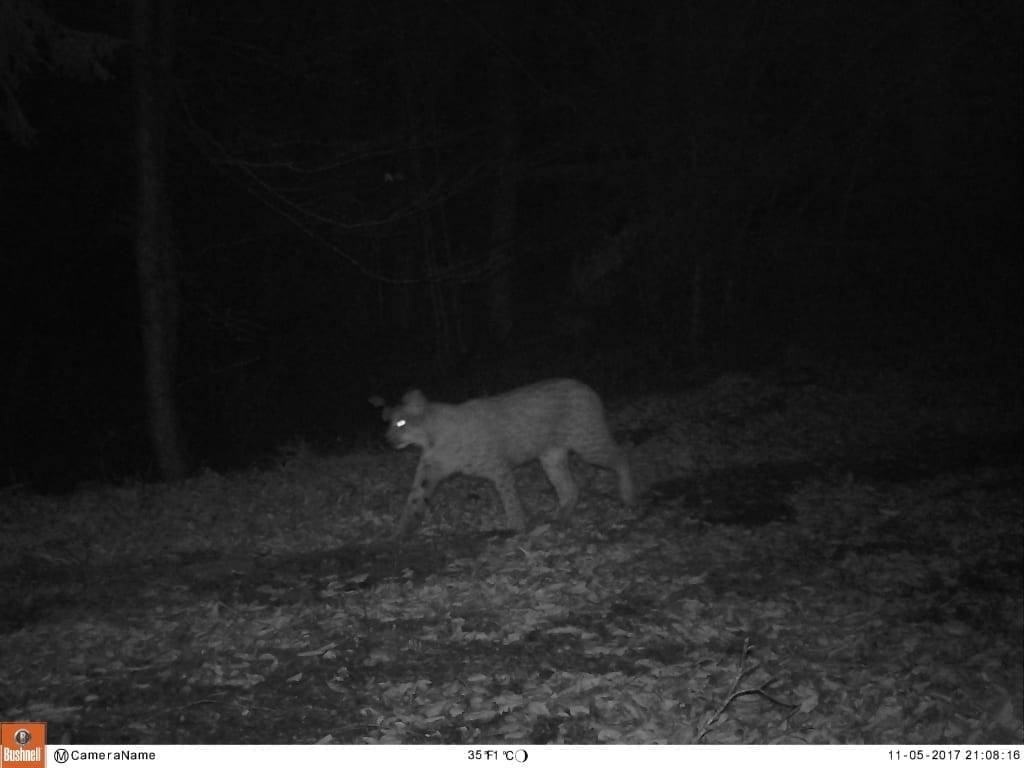
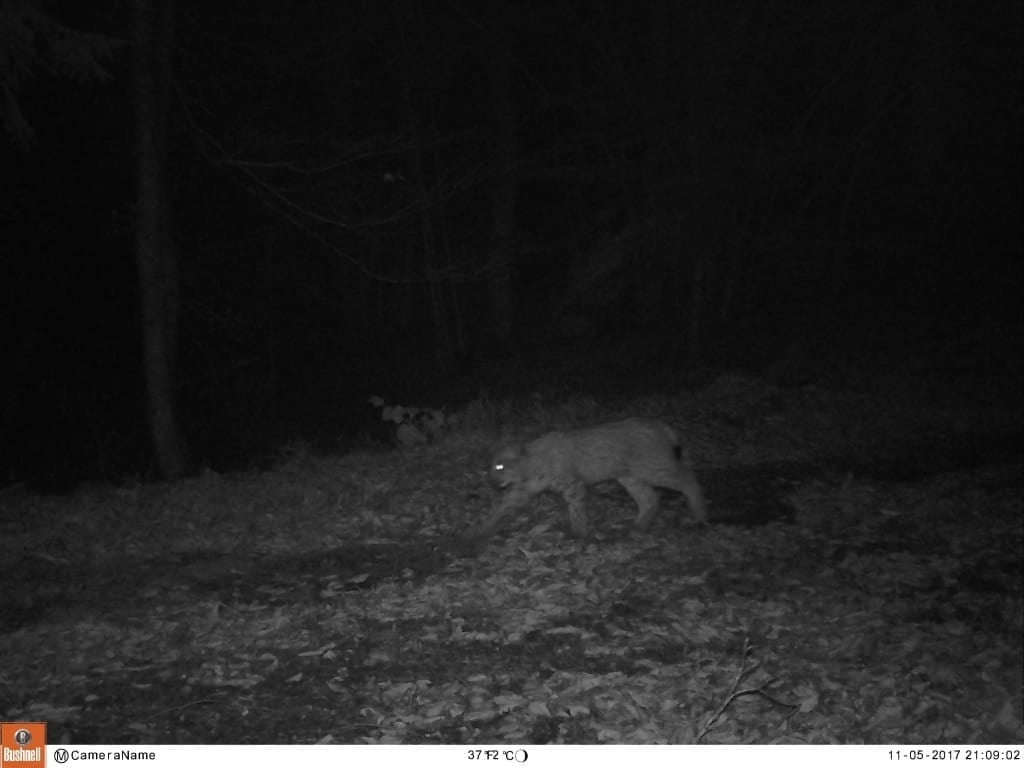
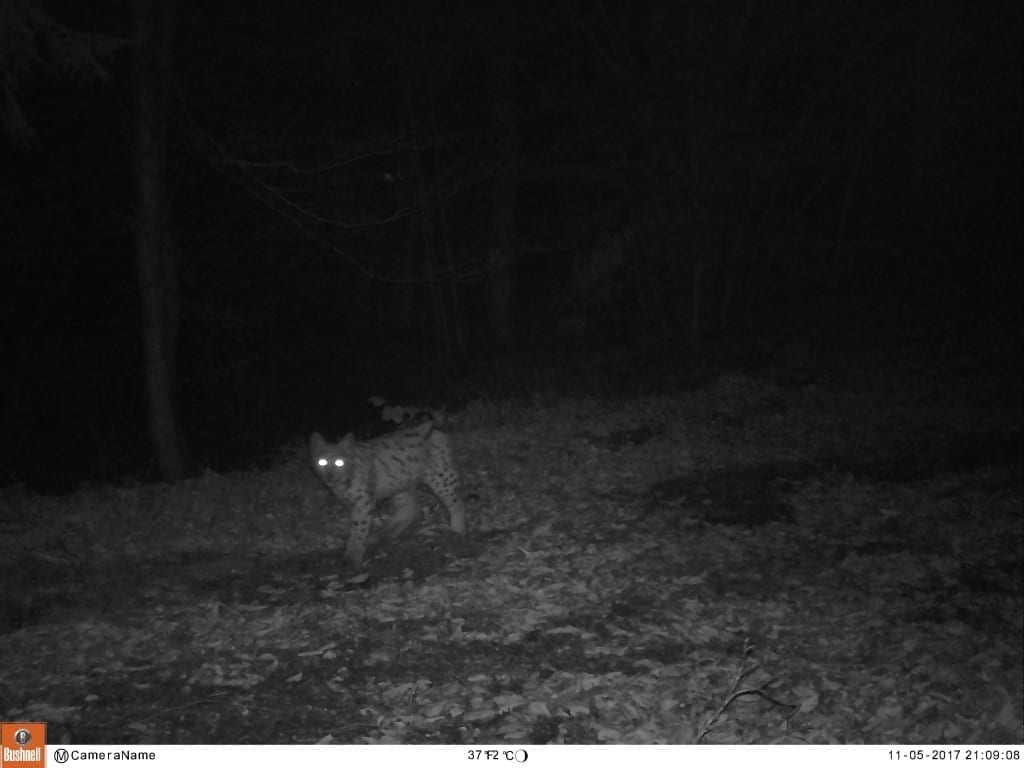
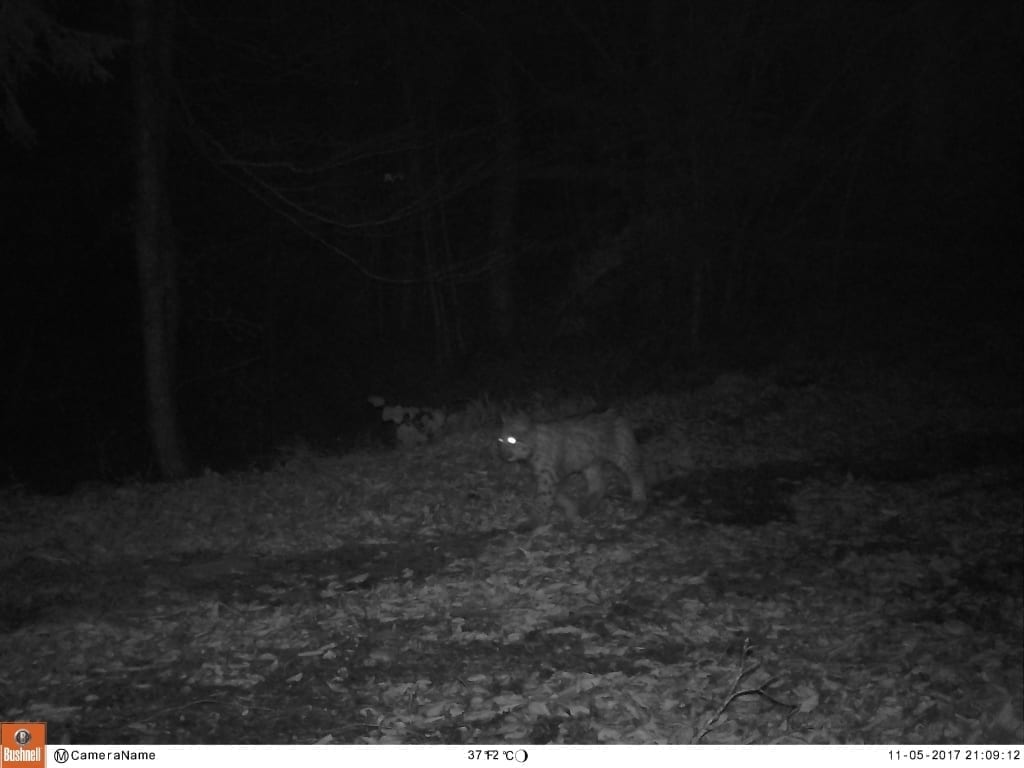
An adult female lynx passes the camera, followed by 1, 2… 3 healthy looking cubs. Extremely rare captures and a big reward for all the hard work that goes into monitoring them.
The next day, we leave for Biokovo Nature Park – an altogether different climate, down on the Dalmatian Coast. The snow disappears and is eventually replaced by striking, ragged, scrub-covered mountains.
We meet Goran and Tomislav, who for the past few days have been rising at the crack of dawn for wolf monitoring. There are 2 packs of wolves (or ‘vukovi’ in Croatian) living in the nature park, under a lot of pressure from humans. Previously GPS-collared wolves haven’t lasted more than 1-2 years before being killed illegally. It is extremely difficult to police however, and makes Bioterra’s work here all the more important.
Tomislav takes us on a hike into the mountains to check older camera traps and set up one of the new ones that we have brought over.
There are only though to be about around 200 wolves in the whole of Croatia, in around 20 packs – so the two packs on Biokovo are an important part of the population. They come under pressure from local hunters and livestock owners, being blamed if hunters fail to catch any wild boar, of if any livestock go missing. Of course, the wolves do kill livestock here – they freely roam the mountains and are easy targets. Any verified losses are compensated by the government.
We check the camera traps one by one, as we come across them – some have failed altogether, some have caught very little. One catches a wildcat and a marten, as well as lots of wild boar.
Tomislav checks a camera trap for wolves
The last camera is as deep as we can go today into the wolves’ territory. They have their dens in the most remote parts of the mountains, and are difficult to follow. Tomislav is confident of finding wolves on the last camera trap (“99% chance”) but there are only wild boar. We are skirting their territory, and it may be that they simply haven’t come this way for a while. The only signs are a few scats, all fairly old.
We then get to work setting up one of the new Browning camera traps that we’ve brought over to help with this work. More cameras equals much more information on where wolves have and haven’t been, and give better information on movements and pack sizes.
After some light gardening, some spreading of old fish and deliberation on the best place for the camera, we get to work strapping it up, with the Adriatic sea in the background.
With the winter approaching, it will be a long time until this camera is checked again – about 3 months time – so it is important to get everything right now.
The following day, we’re invited to meet with the Biokovo Nature Park officials and it’s fascinating to hear of the challenges they face and the controversy of the wolves. There is opposition to wolves here, despite their protected status, by most of the local people and even some members of the local authorities. Ecotourism is small, unlike in Velebit, so many people don’t benefit from the wolves presence in the ecosystem. There are few people fighting for the wolves, which makes Bioterra’s and the park official’s work so important. We obviously express our wish to do what we can in provided equipment to help with more monitoring.
We then go to see something truly wonderful – a green bridge. There are several of these huge structures crossing the relatively new motorways in Croatia to allow wildlife to cross unimpinged and avoid roadkill.

They are over 150m long, and you honestly wouldn’t know you were on a bridge unless you were told. They, and the whole of the motorway, are fenced so that wildlife is funnelled into going over them and out of danger. Goran and Lidija and have previously been involved in monitoring them using camera traps and express an interest in doing so again – NatureSpy will be providing the equipment to make it happen.
Finally, we go on a final hunt for wolf scat. Bioterra collect the scat for analysis back in Zagreb, to gain information on their diet. Wolves will leave scat in prominent locations, and a drive along a single track road yields several finds.
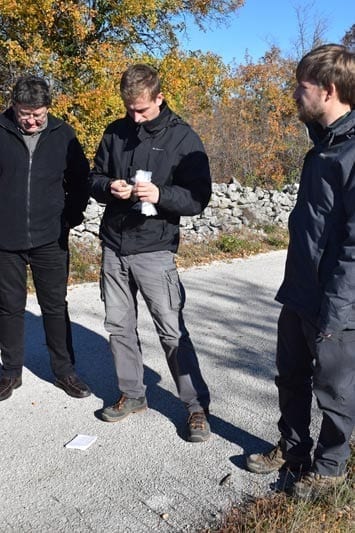
It was an eye-opening trip into a country bursting with natural heritage, and we are so grateful for our hosts Lidija, Goran, Ana, Mirna, Elena and Tomislav for their hospitality. We’re very much looking forward to supporting Bioterra’s work going forward.
This support is only possible for one reason – individual people and large organisations choose to get their camera traps from the NatureSpy Shop. We’re proud to be a social enterprise and a shop with a difference – hopefully the above shows exactly what’s possible when you buy ethically, and #buysocial.